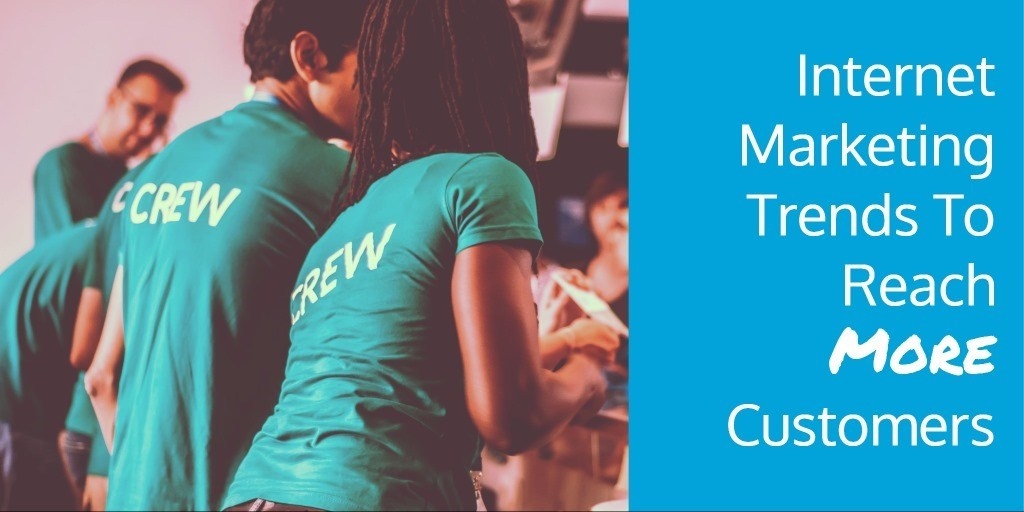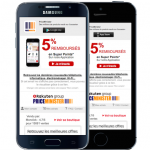Embrace These 2017 Internet Marketing Trends And Reach More Customers

As innovation continues to bloom in the tech world, digital marketers must continue to adapt and innovate to meet client needs. The message is clear: stay on top of these trends (and changes) or risk being left behind!
Kleiner, Perkins, Caulfield & Byers (KPCB) is one firm that analyzes this data each year and publishes their much-anticipated annual Internet Trends Report. This year’s analysis reveals many internet trends, both broad and subtle, that impacted the digital economy, including local and mobile. Let’s examine five of these essential internet trends important for 2017 and beyond.
How Should Businesses Respond As More Consumers Embrace The Web?
There’s been a dramatic rise in internet usage over the past five years, reaching an average of three hours per day on mobile. Desktop usage has declined slightly but did hit two hours per day.
With internet use increasingly being led by mobile, a business that neglects their digital marketing strategies will lose out on numerous opportunities. From advertising to SEO, mobile offers businesses the potential for targeted traffic, branding, and sales.
One way that a business can take advantage of this trend is to focus on optimizing its website. A small business survey created by Clutch reported that 29% of them still do not have a website, and 17% still don’t have a mobile-friendly website. A good website offers fast load times and a responsive design. Local businesses should make use of relevant location details and work on maintaining a consistent name, address, and phone number (NAP) across all platforms.
While KPCB reported that internet usage on mobile is three hours, they also reported the average time on a mobile device per day doubled from 2014 to 2016. That means beyond using the internet, consumers routinely spend time in apps, totaling up to 4 hours, 14 minutes per day.
Another way for a local business to take advantage of this trend is to develop its own mobile app. While smaller businesses may consider an app as being out of reach, large brands are not the only ones that can benefit. When creating an app it’s important to map out how the app will offer value to the customer. Within the design process, definitely keep communication, branding, and sales in mind.
Geo-targeted Ads Seeing A 5X Increase In Driving Consumers To Stores
Google geo-targeted ads should be a go-to marketing resource for a local business. KPCB reports data over the last 12 years that shows a 5-fold increase in geo-targeted local ads that lead directly to a store visit. Any local store ignoring this type of advertising therefore risks losing a huge number of potential customers to the competition.
Local businesses seem to push against local advertising, struggling to track the ROI. However, geo-targeting creates an immediacy that produces real results. At a minimum, local businesses need to make sure all their citations have a consistent NAP on Google My Business, Bing Places, plus directories and review sites.
It’s important to remember that simply hoping to benefit from proximity is not a comprehensive geo-targeted campaign. Successful campaigns use a combination of relevant ads, targeting, and optimized business data across the internet.
Mobile Advertising Spend Is At An All-time High
Mobile advertising spend hit $37 billion, but the gap in the percentage of time spent on mobile and the ad spend suggests greater opportunities for advertisers. The rapid growth in mobile device usage appears to have outpaced advertising spending, with businesses currently not taking full advantage. While the overall mobile ad spend has grown, it can only be expected to continue its growth as more consumers adapt to using mobile as their primary tool for access to the internet.
There are big opportunities here for a business to focus on building out mobile campaigns. As desktop usage falls behind, spending on mobile should become a priority. Mobile ad campaigns need to be tailored to the device and the product, ideally avoiding the type of intrusive ads that create a negative experience for users. Native advertising, interactivity, and targeting should all be used in these efforts.
On-the-go Users Let Voice Search Do The Talking
Voice search is a natural fit for mobile device users, so it’s not surprising to see that 20 percent of mobile queries are now made by voice. We all know it’s cumbersome to make frequent searches via the tiny keyboard on a smartphone, and with voice technology improving consistently, searching via voice just makes sense. As consumers get more comfortable with voice search, the requests will continue to become more conversational.
Businesses looking to benefit from the more conversational type searches need to create content that responds appropriately. For instance, many voice searches will ask direct questions, so content that addresses these questions can appear within the top of search results. Take note: Content stuffed with keywords and written for the algorithm first (rather than consumer first) will find its way to the end of these types of searches.
Local Businesses Can Provide Customer Service Just Like The Big Brands
The KPCB report shows that 60% of consumers would like easier access to online support, and over half of them (54%) would appreciate faster response time. While customer service has always been important to consumers, the ability of local businesses to respond and resolve issues quickly has been a struggle. Social media has allowed consumers access to many major brands, with Twitter and Facebook accounts allowing almost instant response to commenters. This is where smaller local businesses still struggling to provide this level of responsiveness have an opportunity to raise their standards.
In brief, leveraging Facebook chatbots and tools like Hootsuite can enable the smaller business to compete with the big guys.
Interpret These Trends And Start Doing Business Differently
You’ve taken in a lot of numbers and data today! Access the infographic of KPCB’s 2017 Internet Trends Report for an easy to digest view.
The plain truth is that businesses that ignore trends or fail to act on them are losing ground to their competitors. With a willingness to adapt and take more risks, new contenders can quickly make an impact. Ultimately, every business must eventually adapt – and the first ones to start usually cross the finish line first, too!
The post Embrace These 2017 Internet Marketing Trends And Reach More Customers appeared first on Search Engine People Blog.
(51)













